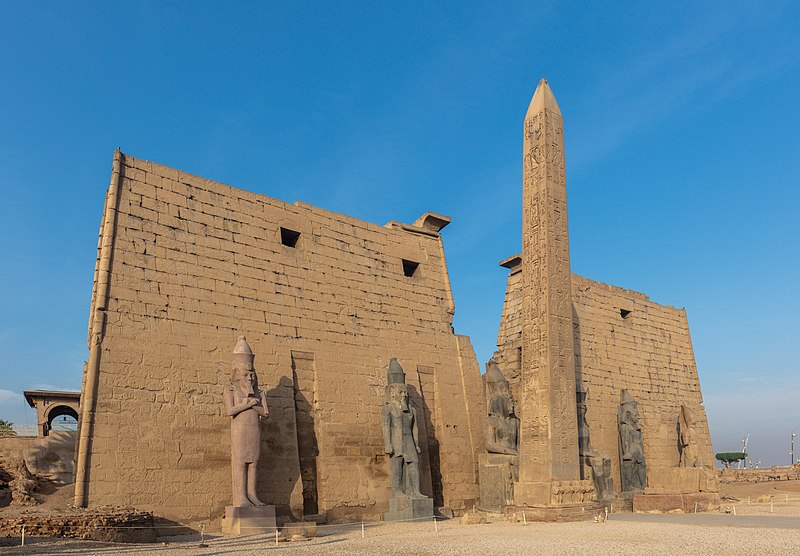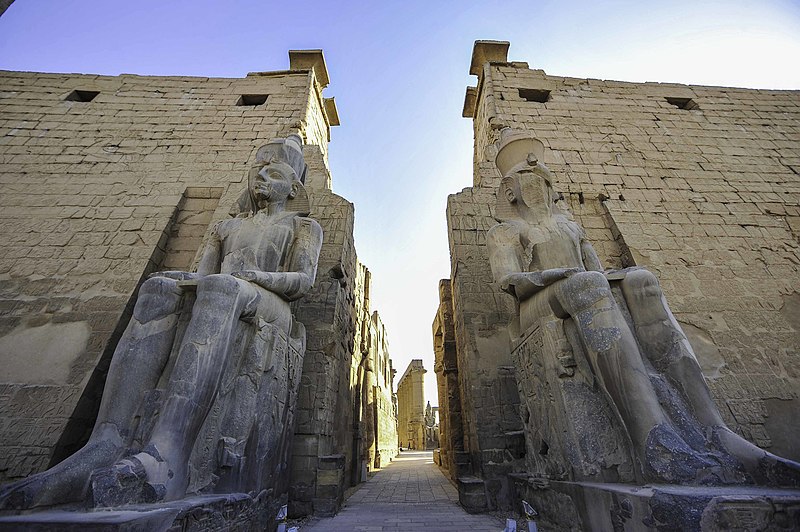Luxor Temple, situated on the east bank of the Nile River in the heart of modern-day Luxor, Egypt, stands as a testament to the grandeur and splendor of ancient Egyptian civilization. Built over a span of nearly 1,500 years, from the 14th century BCE to the 4th century CE, Luxor Temple served as a center of religious worship, royal ceremonies, and political power throughout Egypt’s history, bearing witness to the rise and fall of pharaohs, conquerors, and empires.

The temple’s origins date back to the reign of Amenhotep III (1390–1352 BCE) during Egypt’s New Kingdom era. Originally dedicated to the Theban Triad—Amun, his consort Mut, and their son Khonsu—Luxor Temple was constructed as a grandiose expression of royal power and divine authority. The temple complex was expanded and modified by subsequent pharaohs, including Tutankhamun, Ramses II, and Amenhotep IV (later known as Akhenaten), each adding their own contributions to its architectural design and decoration.
One of the most striking features of Luxor Temple is its massive entrance, known as the First Pylon, which is adorned with colossal statues of Ramses II seated on his throne and flanked by smaller statues of the goddess Sekhmet. Beyond the First Pylon lies the Great Court, a vast open-air courtyard surrounded by towering columns, obelisks, and colossal statues of pharaohs and gods. This central area served as a gathering place for priests, worshippers, and ceremonial processions during religious festivals and rituals.
The centerpiece of Luxor Temple is the inner sanctuary, which consists of a series of halls, chambers, and shrines dedicated to the Theban Triad and other important deities. The most sacred area of the temple is the Holy of Holies, a small chamber that housed the divine statue of Amun, believed to be the physical embodiment of the god’s spirit. Access to the Holy of Holies was restricted to high-ranking priests and pharaohs, who performed rituals and offerings to honor the gods and ensure their favor.
Throughout its history, Luxor Temple underwent numerous modifications and renovations, reflecting the changing religious and political landscape of ancient Egypt. During the reign of Amenhotep IV (Akhenaten), the temple was briefly dedicated to the worship of the sun god Aten, and later pharaohs, including Ramses II and Alexander the Great, added their own contributions to its structure and decoration.
In addition to its religious significance, Luxor Temple also served as a political and administrative center for the ruling pharaohs, who used it as a venue for royal ceremonies, state functions, and diplomatic affairs. The temple’s grand architecture, lavish decorations, and strategic location made it a symbol of Egypt’s wealth, power, and prestige, attracting pilgrims, traders, and dignitaries from across the ancient world.
Today, Luxor Temple stands as one of Egypt’s most iconic and visited archaeological sites, attracting millions of tourists from around the world who come to marvel at its grandeur and explore its mysteries. Guided tours of the temple provide valuable insights into its history, architecture, and significance, allowing visitors to appreciate the ingenuity and craftsmanship of the ancient Egyptians who built this remarkable monument. With its towering columns, majestic statues, and richly decorated halls, Luxor Temple continues to inspire wonder and awe, serving as a testament to the enduring legacy of ancient Egypt and its profound impact on human history and civilization.

